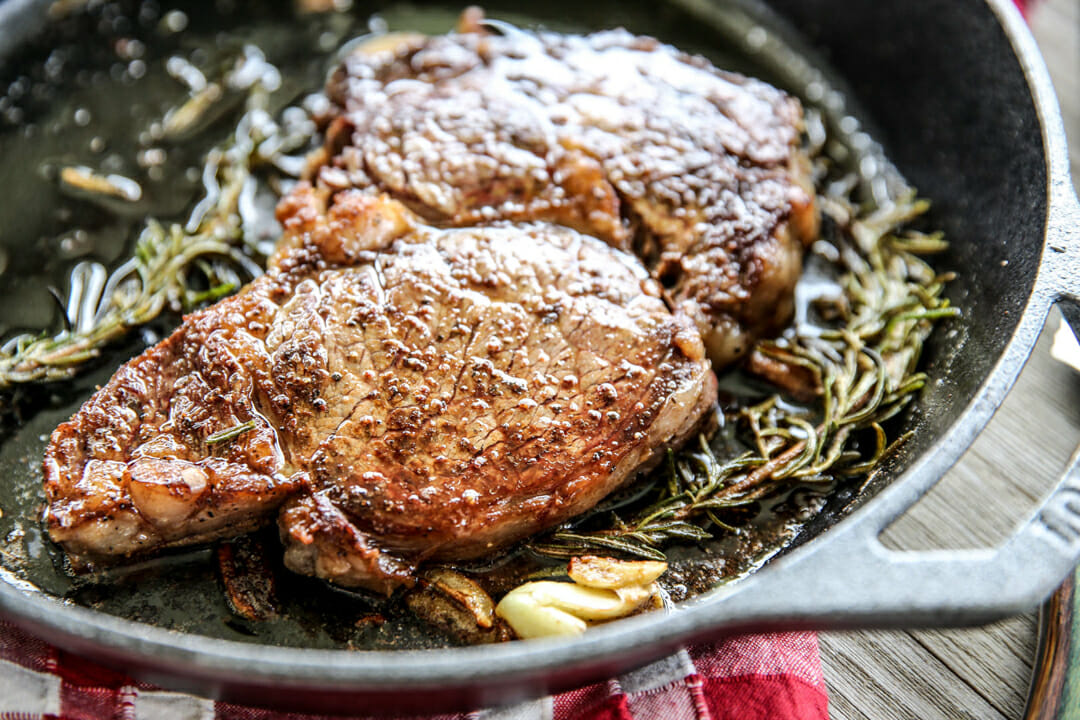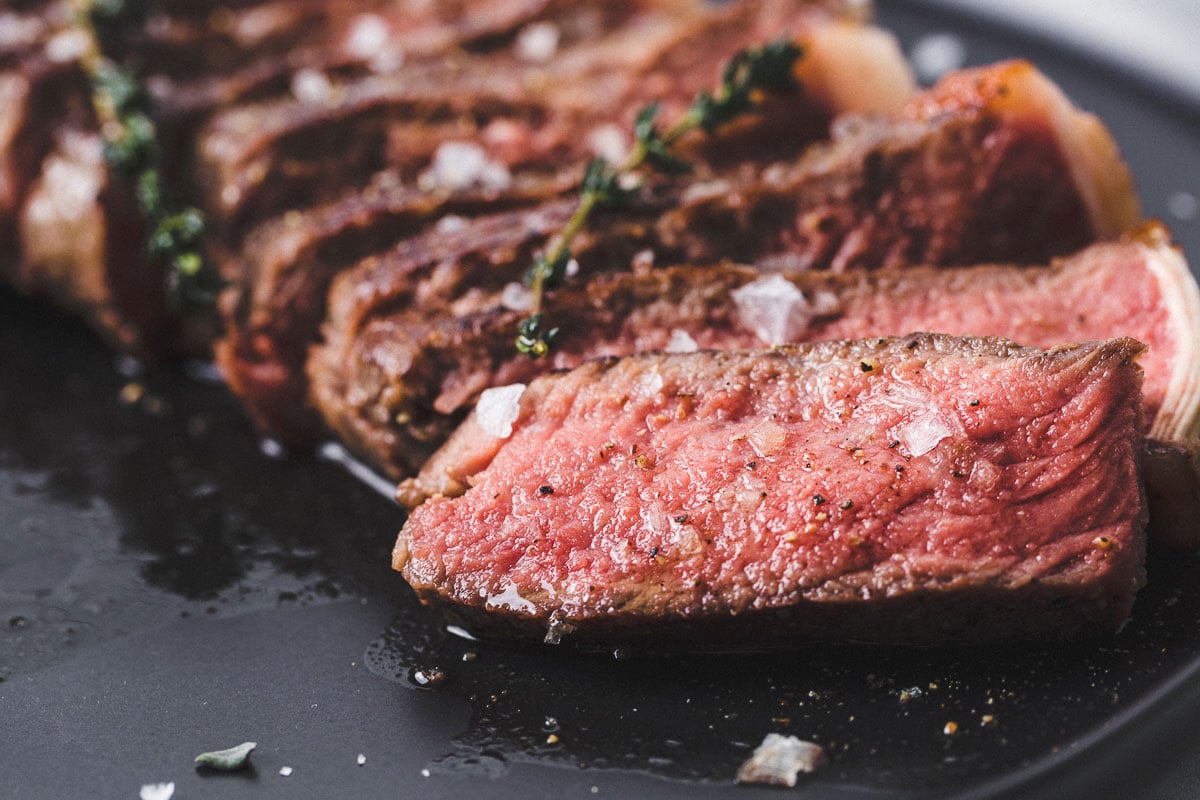The Ultimate Guide on How to Cook Steak on a Stove: A Step-by-Step Approach for Perfect Results
Written By James Morgan
Have you ever found yourself staring longingly at a stunning steak in a restaurant, wishing you could recreate that delicious dinner in the comfort of your own home? If the answer is yes, then you are in the right place! This article will cover *how to cook steak on a stove* in such a way that you will feel like a professional chef right in your kitchen. Cooking steak can be an art, and we will explore the methods, techniques, and best practices that will elevate your cooking game. From choosing the right cut of steak to mastering the perfect sear and doneness, we're going to leave no stone unturned.

Why Cooking Steak on the Stove is Ideal
Cooking steak on the stove is often seen as an underrated technique. Unlike grilling outdoors, where weather can be unpredictable, cooking steak on the stove allows for control over temperature and timing. Not to mention, all you need is a good frying pan or a *griddler*, and you can whip up a mouthwatering steak dinner on any day of the week. Plus, you can easily manage the cooking process, adding flavors and ensuring the steak reaches your desired doneness. The charming sizzle that fills the air as it cooks only adds to the experience, drawing you and your loved ones into the kitchen with anticipation.
:max_bytes(150000):strip_icc()/GettyImages-Arijuhani_950332546-d1f78fa10aac4e0dbe8575ffe8036896.jpg)
Gathering Your Ingredients and Cookware
Firstly, let's look at the most important element of this article: **The Ingredients**. Youll want to ensure you have everything on hand before you start this culinary adventure. Heres what youll need:
- 1 thick-cut steak (choose your preferred cut: ribeye, tenderloin, or sirloin)
- Salt (its essential to keep it simple)
- Freshly ground black pepper
- Vegetable oil or butter
- A few sprigs of fresh herbs (like rosemary or thyme) for garnishing
- Optional: garlic clove, smashed (for added flavor)
Along with these ingredients, you'll need some cookware to facilitate the cooking process efficiently:
- Griddler - A versatile tool ideal for pan-searing steaks.
- Knife - For slicing your steak beautifully for serving.
- Cutting Board - To prep your steak and slice it after cooking.

Preparation: Getting Ready for the Perfect Cook
Once you've gathered all your ingredients, it's time to prepare for the cooking process. The approach you take to prepare your steak is crucial as it sets the foundation for achieving optimal flavor and tenderness. Begin by allowing your steak to come to room temperature; it should sit out for approximately 30-60 minutes. This technique helps the steak cook more evenly and leads to the best texture and tenderness.
Next, pat the steak dry with paper towels. This is incredible in achieving the perfect sear, as moisture is the enemy of browning. Generously season both sides with salt and **pepper** to enhance the natural flavors of the meat.

The Searing Process: Let's Get Cooking
Now we get to the fun part cooking your steak! Heat your *griddler* over medium-high heat, letting it get hot enough. The goal here is to create a wonderful crust on the surface of the steak, which locks in the natural juices and flavors. Once your pan is hot (you can test this with a drop of water it should sizzle and evaporate immediately), add a couple of tablespoons of vegetable oil or a pat of butter.
When the oil is shimmering, it's time to lay the steak in the pan carefully. Avoid moving it around to allow a good sear to form; this takes about 3-4 minutes for thick cuts. Flip the steak using tongs once a deep brown crust has formed. Heres where you can add flavor if you'd like, introduce a smashed garlic clove and some fresh herbs to the pan. As they cook, give your steak a baste with the melted herbs and butter to infuse additional flavor. Continue cooking the second side until it reaches your preferred doneness.
Understanding Doneness: How to Tell When Your Steak is Ready
Doneness is an essential factor when it comes to steak, and knowing how to achieve exactly what you want will take your cooking skills to new heights. There are several methods to determine if your steak is cooked to perfection. The most accurate way, of course, is using a meat thermometer. Here are the standard temperature guidelines:
- Rare: 120-125 F
- Medium-Rare: 130-135 F
- Medium: 140-145 F
- Medium-Well: 150-155 F
- Well-Done: 160 F and above.
If you dont have a meat thermometer, a great trick is to use the finger test; it requires some practice but can help you gauge doneness. You can also pay attention to the texture of the meat it should feel firm and spring back when lightly pressed for doneness.
Resting Your Steak: The Key to Juiciness
After cooking, it is absolutely crucial to let your steak rest. Resting allows the juices to redistribute throughout the meat fibers instead of spilling out when you slice into it right away. If you skip this step, your steak could end up dry and tough. Allow your steak to rest for 5-10 minutes on a cutting board, loosely covered with aluminum foil to keep it warm during this time.
Serving: Plating Your Steak Just Right
Once youve let your steak rest, it's time to slice and serve it. Use your *knife* to cut against the grain; this helps ensure your steak is tender and easier to chew. Presentation is just as important as taste, so plating is an essential next step. Consider garnishing with fresh herbs or a sprinkle of coarse salt for aesthetics. Feel free to serve it with your favorite sides think roasted vegetables, mashed potatoes, or a fresh salad for a complete meal.
Caring for Your Cookware: Maintaining Kitchen Essentials
After enjoying that delicious steak, don't forget about the care of your kitchen tools. Using the right cleaners helps maintain the quality and longevity of your cookware. Consider using:
Cookware Cleaner - to keep your pans looking their best.
Cutting Board Oil - to treat your cutting boards and maintain the aesthetics while ensuring they remain bacteria-free.
As an Amazon Associate, I earn from qualifying purchases.



